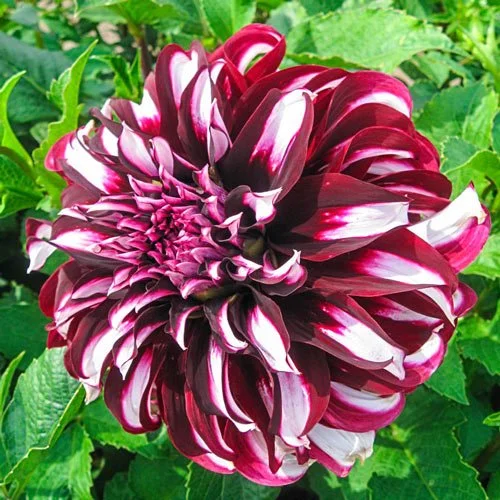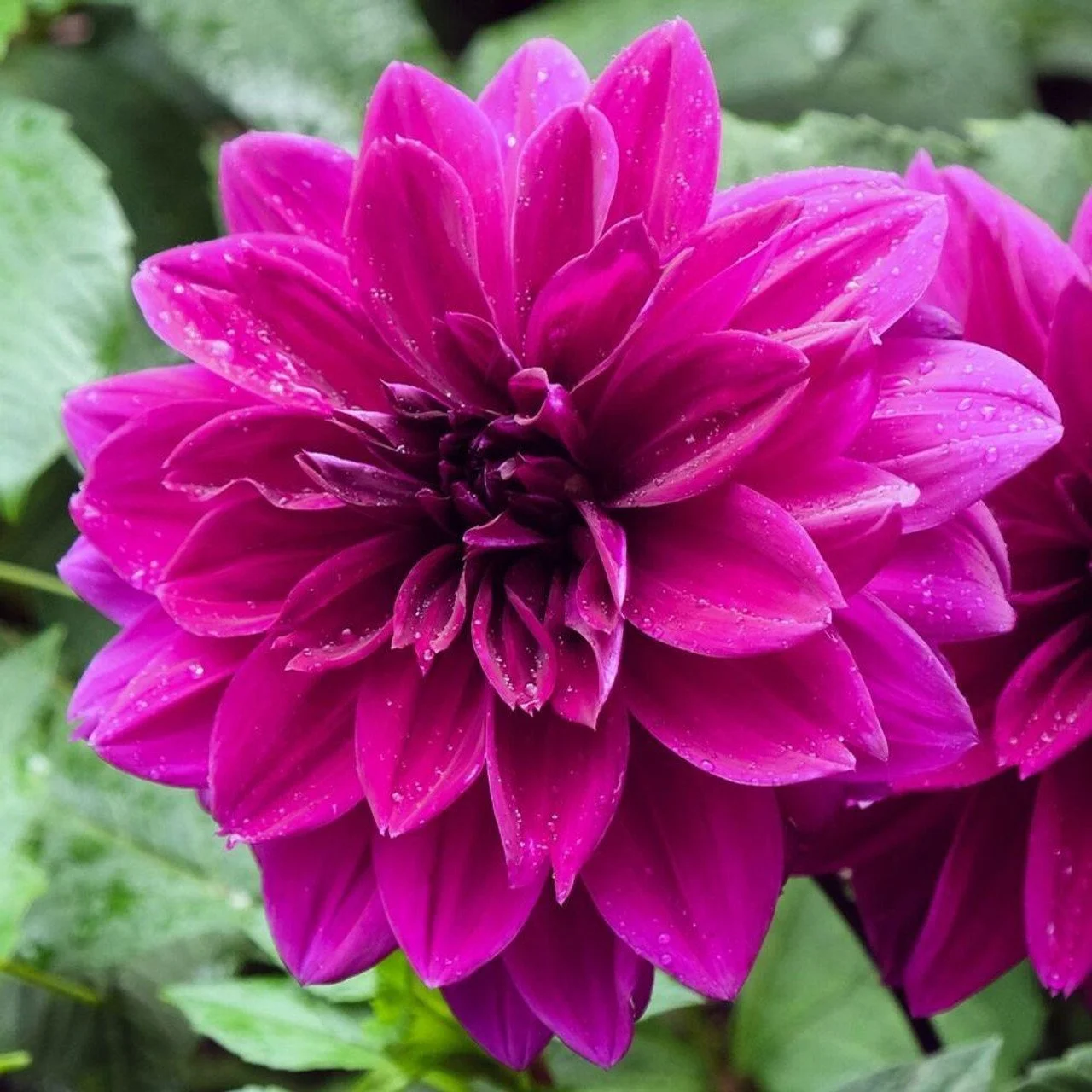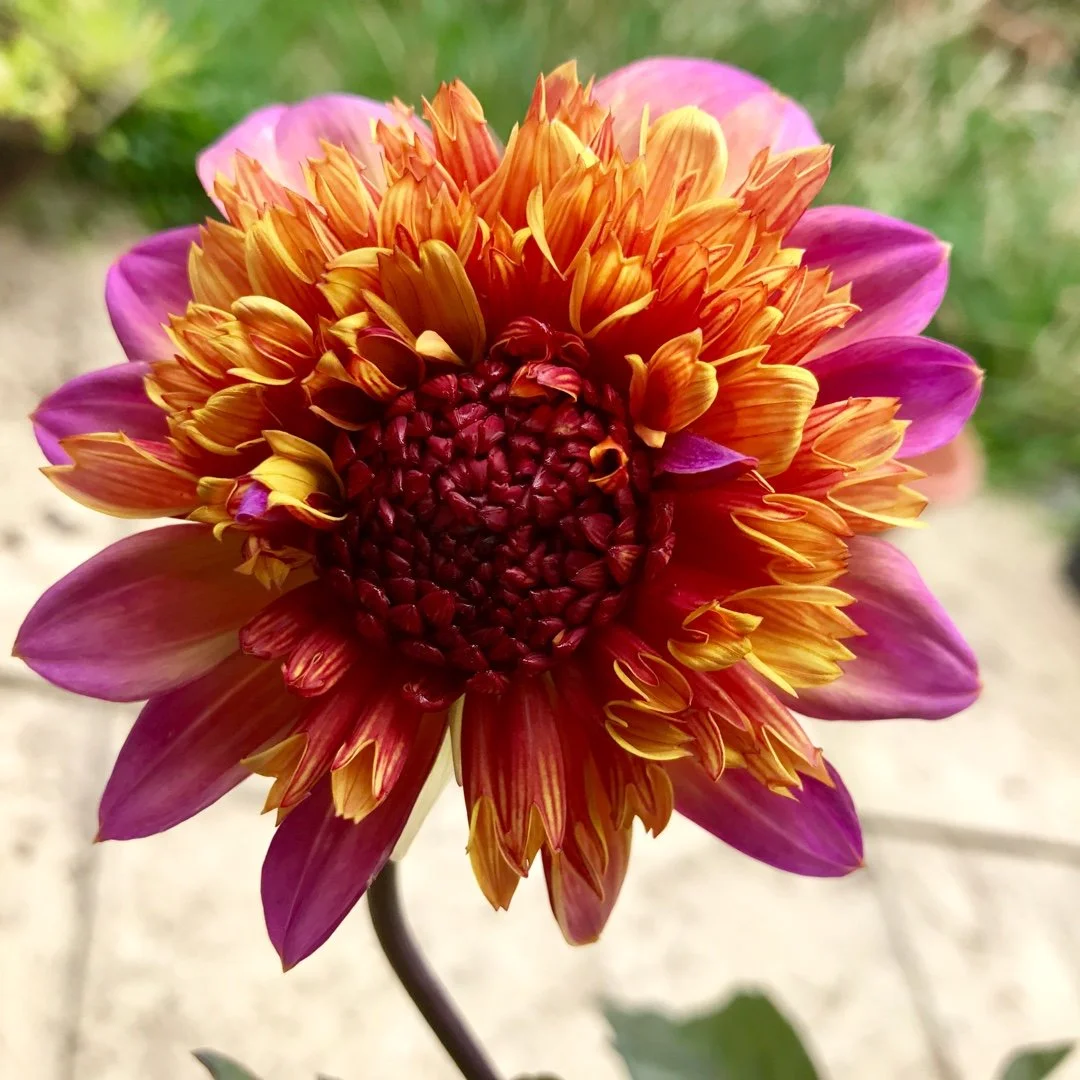How to Grow Dahlias
Dahlias hold a special place in the heart of many, including ours. Ranging from pretty much all the colors of the rainbow to variegated and bicolor, Dahlias vary greatly in size as well. (Ever heard of “Dinnerplate Dahlias?”) What’s not to love?
To help you start your Dahlia growing adventure, we have an exciting selection of Dahlia tubers at the nursery just waiting to get planted. And here in this article, you’ll learn everything you need to know about growing Dahlias.
Planting & Growing Dahlias
Sunlight
Dahlias require plenty of sunshine, at least 6 to 8 hours. They especially appreciate morning sunlight.
Soil & Fertilizers
For best results, give them rich, well-draining soil with G&B Organics Purely Compost. Top it off with G&B Soil Building Conditioner to conserve moisture and keep weeds at bay.
If you have clay soil, amend it with G&B Soil Building Conditioner to improve soil texture.
When to Plant Dahlias
You can plant your Dahlias outdoors when the soil has warmed to at least 60ºF.
If you prefer to get a headstart, you can start your tubers indoors. Small to medium-sized Dahlias grow well in containers.
How to Plant Dahlias
If you plan on incorporating large Dahlias (4 feet tall and up) into your cut flower garden, plant the tubers in an area that won’t compete with other plants. Make rows that are spaced 3 feet apart.
For low to medium-height Dahlias (around 3 feet tall), plant the tubers 2 feet apart.
Step 1: Before planting your tubers, dig a hole about 6 to 8 inches deep. Mix in compost and sprinkle G&B Simples Bonemeal into the planting hole.
When placing the tuber into the hole, ensure the “eyes” (the small pink bumps at the stem base) face up. DON’T water right after planting, as it will cause rot at this point. No need to mulch, either. Dahlias need sun on their roots.
Step 2: Cover the tuber with at least 1 inch of soil.
Step 3: Keep an eye on the tuber. When it sprouts, fill the hole with more soil until it reaches ground level. At this point, you can water.
Growing Dahlias
Once your Dahlias have sprouted, feed them with fertilizer low in nitrogen, such as G&B Simples Bonemeal. Continue to fertilize every 3 to 4 weeks until the end of the growing season, which is in autumn.
To encourage bushy rather than leggy plants, pinch off about 4 inches of the center shoot once the plant grows a foot tall.
If you want large blooms, look for a flower cluster. Remove the small buds that are next to the central bud. This trick (called disbudding) will force the plant to concentrate on growing larger flowers.
Stay on top of deadheading faded blooms to avoid pests and disease. Cut the full stem of faded flowers. The more you cut, the more they’ll bloom.
Harvesting Dahlias
It’s best to harvest Dahlias early in the morning to stay ahead of the heat.
Prepare a bucket of cold water and grab your shears. Cut your Dahlias as soon as they bloom, and place them in water. When placing the flowers into a vase, remove the bottom leaves of the stems. Keep your fresh-cut Dahlias in a cool spot out of direct sunlight, and enjoy! Vase life is usually around 7 days.
Available Varieties
Dinnerplate Dahlias
For fans of all things maximalist, Dinnerplate Dahlias are your "go big or go home" flowers. Growing up to a whopping 4 feet tall with massive blossoms 12 inches in diameter, these Dahlias have a magnificent presence.
Dahlia Dinnerplate ‘Tartan’
Dahlia Dinnerplate ‘Snow Country’
Dahlia Dinnerplate ‘Mom’s Special’
Dahlia Dinnerplate ‘Thomas Edison’
Anemone Flowering Dahlia ‘Floorinoor’
Much smaller than your Dinnerplate Dahlia, Anemone Flowering Dahlia ‘Floorinoor’ is just as special. The colors of ‘Floorinoor’ are reminiscent of a tropical sunset with its red, orange, and pink petals. It grows up to 40 inches tall.
Fimbriata Dahlia ‘Alauna Clair-Obscur’
The petals of Fimbriata Dahlias give a fringed effect and have no shortage of striking colors. Growing up to 40 inches tall, these Dahlias are sure to bring the wow factor to any cut garden or floral arrangement.
Ball Flowering Dahlias
The cheerful, perfectly geometrical globes that are Ball Flowering Dahlias are unique and charming. Their tightly compacted petals bend back toward the stem and create 3- to 4-inch spherical blossoms.
Dahlia Ball Flowering ‘Genova’
Dahlia Ball Flowering ‘Marble Ball’
Cactus Dahlia
Cactus Dahlias' spiny petals give the impression of cacti, but the sight of these flowers will soften even the prickliest of hearts. Cactus Dahlias grow 1 to 4 feet in height.
Dahlia Semi-Cactus ‘My Love’
Dahlia Cactus ‘Friquolet’
Dahlia Cactus ‘Nuit d’Ete’













